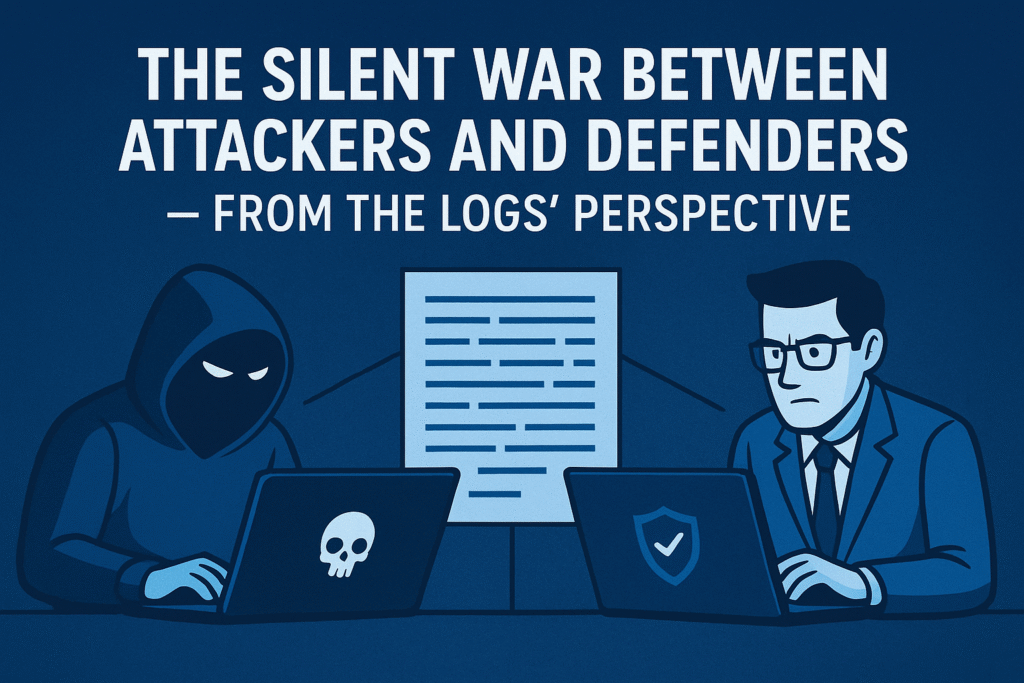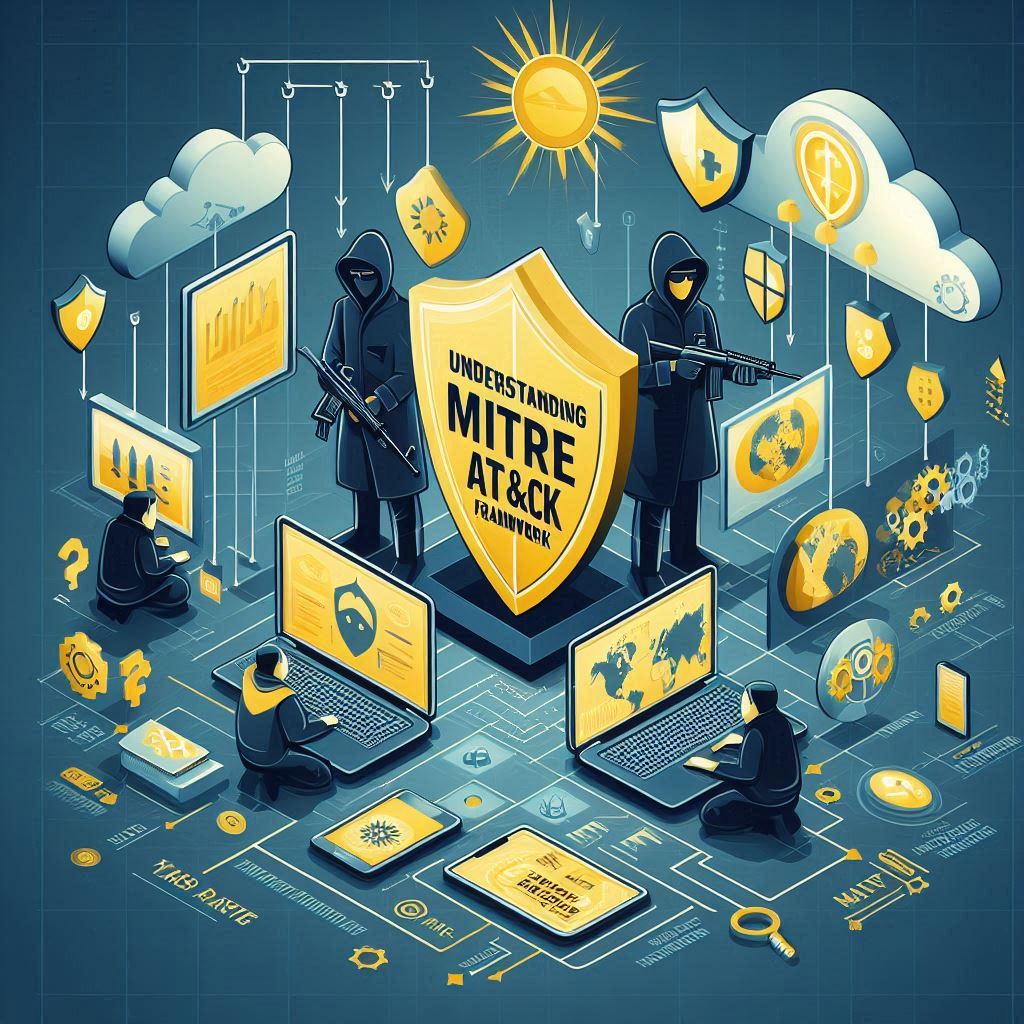Introduction
Behind the scenes of every cyberattack and defence lies a less-visible battleground: the log files. While headlines show ransomware, data breaches, and vulnerabilities, the real war is silent — it’s fought in system logs, audit trails, network flows. Attackers and defenders engage in a cat-and-mouse game where each log entry can be a clue, a trap, or a blind spot.
As a seasoned detection engineer, I believe that logs are the front-line evidence of cyber warfare. Attackers seek to hide, distort or erase them; defenders seek to read, correlate, and act on them. In this article we’ll explore how logs become the weapon and shield, examine attacker and defender tactics, and give you actionable steps to turn logs into your strategic advantage.
1. Why Logs Matter — The Battlefield Defined
Logs are the forensic and real-time record of what happens in your systems, network, endpoints and cloud. They capture the traces of events: user logons, file accesses, process creations, network connections, DNS queries, system changes. Because the war is stealthy, logs provide the only window into what the opponent is doing.
- According to a report by Sophos, in 82% of the incident response cases studied the attackers disabled or wiped telemetry logs to hide their tracks. [link]
- Logs are foundational for threat-hunting, incident-response, compliance and anomaly detection. A government document states: “cloud security logs provide a detailed record … which can be used to detect suspicious activity such as command-and-control, lateral movement or other techniques.” [link]
Therefore, the war is real: if your logs are missing, incomplete or un-monitored — the attacker already has the advantage.
2. Attackers’ Tactics: What They Do With (or To) Your Logs
Attackers know they must move stealthily, hide their tracks and exploit logging gaps. Some of the tactics:
2.1 Log tampering & deletion
Logs themselves are often soft targets: many systems allow writes by multiple sources, they may be unencrypted, or stored locally. Attackers exploit this. As one analyst wrote:
“Attackers typically target logs by exploiting vulnerabilities … they might inject false entries, delete specific logs to erase traces, or modify details like timestamps and IP addresses.”[link]
This is not hypothetical. The Sophos data above confirms missing telemetry in many cases.
2.2 Minimal observable footprint
Rather than using loud attacks, many adversaries move in ways that leave minimal artifacts in common logs — they attempt to stay below thresholds, use living-off-the-land binaries, use legitimate credentials. They exploit blind spots in logging (e.g., missing PowerShell command logging, missing remote code execution logs) so that defenders see nothing obvious. [link]
2.3 Using logs to evade detection
Attackers also “read” your logs — they probe what you monitor, what you alert on, what you ignore. When you rely on fixed signature rules (“10 failed logins = alert”), they may avoid crossing that threshold or distribute it across IPs/hosts. [link]
2.4 Taking advantage of attacker advantage
One recent analysis argues that attackers hold the long-term advantage because of the complexity of the systems defenders must protect and the freedom of manoeuvre attackers enjoy. [link]
3. Defenders’ Tactics: How to Read and Use Logs as Weapons
Defenders must adopt a log-centric mindset: logs are more than “storage;” they are intelligence, early-warning systems and forensic evidence. Key strategies:
3.1 Centralize, protect, and correlate logs
- Centralize your logs into a secure, write-once (WORM) or tamper-resistant system so attackers can’t erase local logs and hide. [link]
- Correlate logs across sources: network logs, DNS logs, endpoint logs, proxy logs. A blog on log correlation explains that without connecting events you “miss the forest for the trees.” [link]
- For example, DNS logs may show a suspicious domain, firewall logs then show traffic to that domain, endpoint logs show the process spawning – when you connect these you reconstruct the chain. [link]
3.2 Hypothesis-driven threat hunting
Instead of waiting for alerts, defenders should proactively ask: “If an attacker enters, what logs will change?” A structured hunt might examine non-business hour RDP logons, unusual process launches, DNS queries to newly-registered domains, lateral movement attempts. [link]
3.3 Ensure logging across the kill-chain
Logs should cover all stages of an adversary’s activity: initial access, lateral movement, persistence, escalation, exfiltration. Without coverage, you will have gaps. The Azure ATP case study shows how using multiple log sources cut investigation time significantly. [link]
3.4 Continuous improvement & automation
Because attackers are evolving, defenders must evolve: build analytics, tune alerts, run red-team/purple-team exercises, refine detection based on past incidents, and automate responses. [link]
4. Real-World Log Examples & Use Cases
Here are practical scenarios to demonstrate how logs become the weapon & the battlefield.
Example A: DNS logs as sentinel
A defender notices unusual DNS queries to algorithmically-generated domains (DGAs) from one endpoint. By correlating DNS logs with proxy and firewall logs, they discover that same endpoint forwarded data via HTTPS to a rare external IP. This triggered a threat hunt and early containment. Based on documentation: DNS is “a more complete record … making it a valuable log source for defenders.” [link]
Example B: Log tampering by adversary
An attacker gains access to a system, disables the logging service, and then uses native binaries to move laterally. Later, they re-enable logging to avoid suspicion. Defender finds that the log gaps line up with key events (credential dump etc). This is the exact type of scenario described by analysts as “attackers wipe logs in most attacks.” [link]
Example C: Correlation reveals persistence
A contiguous chain of events: privileged account logs onto server at midnight -> process spawn of lsass dump -> firewall logs show outbound connection to unknown IP -> victim host initiates SMB session to file-share. Individually each event might be benign. But together they tell a story of breach. This is the “log correlation” mindset. [link]
5. Why Many Organisations Are Yet Losing the Silent War
Despite the availability of logging tools, many organizations fall behind due to:
- Missing or misconfigured log sources (e.g., PowerShell logging disabled, VPN logs lack device fingerprint). [link]
- Log retention and visibility gaps – attackers exploit low retention or missing logging.
- Over-reliance on signature-based alerts rather than behavior/hypothesis led hunts. [link]
- Underinvestment in defenders relative to attackers: defenders must monitor, patch, log, analyse; attackers only need one successful chain. [link]
6. Actionable Log Strategy: How You Can Win
Here is a checklist you can implement (or provide to your clients/students) to improve your log-posture and tilt the advantage toward defenders.
- Inventory all log sources – network flows (NetFlow/IPFIX), DNS, proxy, firewall, endpoint process logs, authentication logs, cloud activity logs. [link]
- Ensure logs are centralized & tamper-resistant – send logs to a secure collector, ensure local logs cannot be simply deleted, enable write-once policies.
- Enable high-value logging – e.g., PowerShell script logging, process creation, privileged logons, unusual remote sessions.
- Implement retention policy & audit – ensure logs are kept for a period that supports investigation (weeks/months) and include time-synchronisation (UTC).
- Run regular correlation & threat hunting – build queries/hypotheses (e.g., “If attacker uses lateral movement via SMB, look for host A to host B SMB sessions after midnight by privileged user”). Use multiple log types. [link]
- Monitor your logging health – count gaps, missing events, disabled services, ensure logs are being generated and forwarded. (Remember: in 82% of response cases, attackers tampered with telemetry). [link]
- Use deception and prepare defenders – run red/purple-team; simulate attacks to test if your logs detect them. Stay ahead of attacker methods. [link]
- Educate stakeholders & build a culture – logs are not just for SOC teams; application owners, system admins must appreciate that proper logging = security visibility.
7. The Future of the Silent War
Looking ahead:
- AI and automation will play a big role in analysing logs at scale, identifying patterns, behavioural baselines.
- Encrypted traffic will make network-level inspection harder — logs about DNS/resolution or metadata will gain importance.
- Attacker automation will improve: they will increasingly manipulate logs, use living-off-the-land, and minimize footprints.
- Therefore, defenders will need to focus more on behaviour, abnormality, and cross-log chaining rather than just signature detection.
Conclusion
The war between attackers and defenders is silent, hidden behind the lines of code and the entries of logs. But make no mistake: this is the front line. If your logs are intact, monitored, and correlated — you gain visibility, you gain time, and you can turn the tables. If your logs are missing, tampered with, or ignored — the attacker has the advantage and the war is likely already decided.
So ask yourself: Are you reading your logs — or are the logs silently working for the attacker? Take action today: audit your log-sources, strengthen your log collection, implement hunts, and win the silent war.
References
- “Cybercriminals wiped out logs in 82% of attacks.” Sophos Active Adversary Report.
- “Threat Hunting – ThreatBasis” (log types & importance)
- “Why Hackers Love Logs.” SecurityWeek.
- “The Power of Log Correlation in Threat Hunting.” Medium.
- “Threat hunting using DNS logs – SOC Incident Response Procedure.” SOCInvestigation.
- “Attacker Advantage in Cyberspace: An Enduring Feature of the Domain.” Senft.
- “A Review of Attacker–Defender Games and Cyber Security.” Hausken et al.


